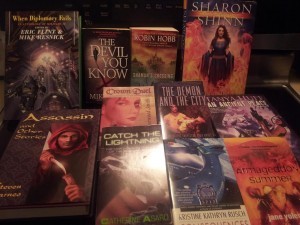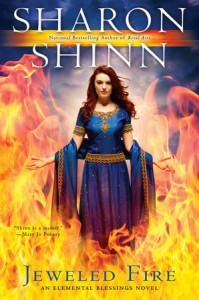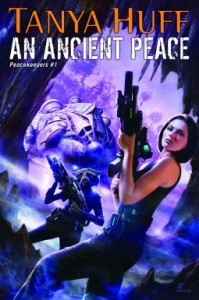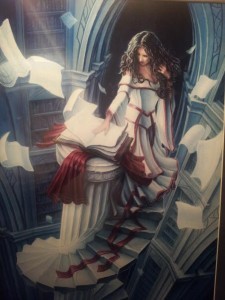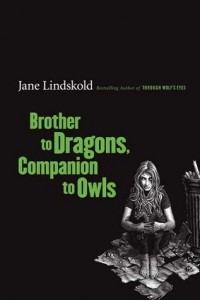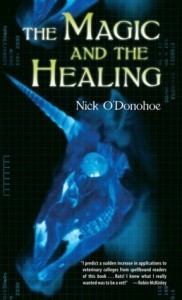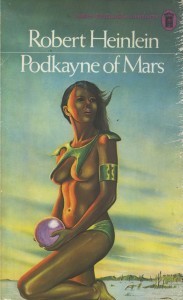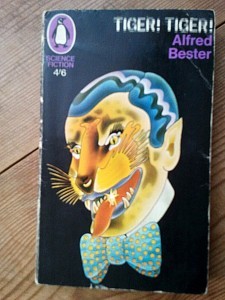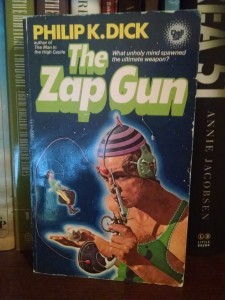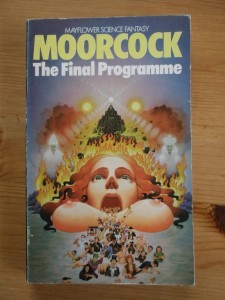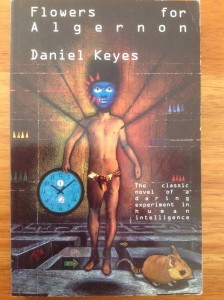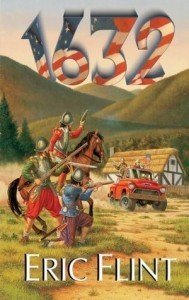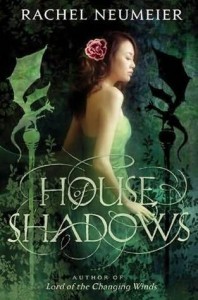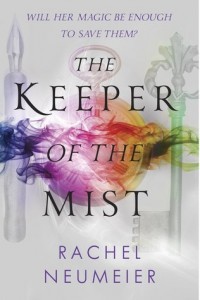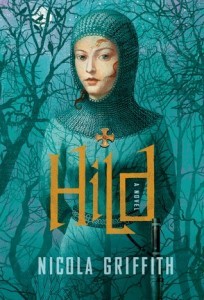Rachel Neumeier's Blog, page 320
November 19, 2015
Fat fantasy wordcounts
A fascinating list from Fantasy Faction, showing the wordcounts of fat fantasy series. I got this via a list linked in the comments to Sarah Avery’s post at Black Gate.
Lord of the Rings – J. R. R. Tolkien
The Fellowship of the Ring: 187k
The Two Towers: 155k
The Return of the King: 131k
Total: 473k
This is not all that much longer than the Griffin Mage trilogy, which was about 120k per book if I remember correctly. I’m a bit surprised that TLotR is not a lot longer than this!
Wheel of Time – Robert Jordan
The Eye of the World: 305k
The Great Hunt: 267k
The Dragon Reborn: 251k
The Shadow Rising: 393k
The Fires of Heaven: 354k
Lord of Chaos: 389k
A Crown of Swords: 295k
The Path of Daggers: 226k
Winter’s Heart: 238k
Crossroads of Twilight: 271k
Knife of Dreams: 315k
Total: 3M 304k (official count)
My God, that’s insane. Every book in this series is INSANELY LONG. I had no idea. I had no plans to read this series ever, but now that goes double. I would have to REALLY LOVE a series to devote that much time to reading it.
No wonder people coined the term “fat fantasy.”
The post gives a few other wordcounts, and indeed there are a lot of looooong books in fat series out there, but the series they didn’t include that I would have been most interested in: Jacqueline Carey’s Kushiel series and the related series. Every book in those linked series is about twice what I would think of as average, including Carey’s debut novel, which astonished me. Now it doesn’t seem quite so out of line, considering Jordan’s series and the others listed in this post.

Why, oh why, do we write (or read) long series?
A long thought-provoking post by Sarah Avery at Black Gate: The Series Series: Why Do We Do This To Ourselves? I Can Explain!
I have to marshal all my hubris to say this in public, but guys, I think I might have the answer. Seriously, not just an answer, but maybe the central answer.
Exploring the answer to this question about bulky stories, of course, will involve a couple of stories and a little bulk. It’ll also involve some claims about the postmodern condition that are guaranteed to inspire some argument — maybe some argument from you, which would be welcome and cool. Please stick with me. I promise I can make my case without resorting to a sequel.
Why Sarah Avery is a very different kind of writer than I am: she is an extrovert, and she favors large-cast series over more intimate, focused stories.
Why she is similar: she has trouble writing short.
what she does in this post: explore in depth some of the reasons that writers may tend to write long and one thing they might need to do in order to write shorter works.
I really don’t think you can squeeze in much of a supporting cast, unless those secondary characters are functioning more as props than as people. At most, you can have two realized characters, but that second can only be squeezed in if you’ve got serious writing chops. More characters than that, and you’re down to tricks that, as Elizabeth Bear likes to put it, hack the reader’s neurology: one telling detail that leads the reader to do all the work filling in a character around it. Okay, that’s a cool skill, one worth having, especially if you can do it so that the reader forgets s/he did all the work and remembers the story as if you’d written the character s/he filled in for you. I think I’ve pulled that trick off exactly once. Man, that was strenuous, and not in the ways I find exhilarating.
Alternatively, you can embrace the thinness of the secondary characters and make clear to your readers that you’ve piled up the story’s awesomeness in some other dimension of your storytelling. A friend who reads hard science fiction short stories almost exclusively has explained his very different readerly sweet spot, saying, “I usually prefer my characters to be cardboard cutouts, so they don’t get in the way of the wonder.” If that’s what you groove on as a reader, or if that’s the profile of the audience you’re going for, then the problem of keeping your word count down is solved.
Avery notes that a one-character story is particularly hard, and here I want to mention Merrie Haskell’s CASTLE BEHIND THORNS, which is a great novel in which, for about a third of the story, only one character is on stage. I do think that is an amazing trick to pull off. Then we are essentially limited to two characters for most of the rest of the book, which isn’t all that much easier.
Avery goes on to discuss character-driven vs community driven stories, and whether it’s possible to write a community-driven story that sticks to the pov of a single character, and declares it is, and I agree. That is seen in, for example, the Spiritwalker trilogy by Kate Elliot, which comes across as epic fantasy even though the entire story is told from a single pov.
Okay, questions:
Is it possible to have a long series that is essentially driven by a single character and not by a community? Avery implies that the answer may be no. Does a series like the Mercy Thompson books count as that kind of series, given that the whole thing is from Mercy’s pov? My first impulse: I would say no, that Avery is right, the surrounding community is essential and the series counts as community-driven. Agree/disagree?
Can anyone think of a longer type of series where one character continues from book to book, but is not surrounded by a continual cast of secondary characters?
Anyway, this is a longer post, but well worth reading if you want to click through.

November 18, 2015
The SFWA suggested reading list for next year’s Nebula
Via File 770, I see that for the first time, SFWA (Science Fiction and Fantasy Writers of America) is making its Nebula Suggested Reading List publicly available.
I’m not paying much attention to the shorter works yet, but the list of novels is fairly long and includes notes about how many times any particular work has been recommended so far. I’m sure it won’t surprise anyone to see that Naomi Novik’s UPROOTED is at the top of the list, with 16 recommendations. It’s immediately followed by Ken Liu’s THE GRACE OF KINGS.
Four titles have more than ten recommendations, twenty-five more than two, and a whole bunch one or two recommendations each.
Quite a few of the works are by the standard authors — I’m sure no one is surprised to see Ken Liu’s novel on the list, or Kim Stanley Robinson’s, or NK Jemisin. But I’m pleased to see a good number of lesser-known, newer, or debut authors on the list as well. A small number of novels were brought out by small presses, very small presses, or were self-published, including the 18th book on the list, with four recommendations: RADIANCE by Grace Draven.

November 17, 2015
WindyCon’s contribution to my TBR pile
I can’t say I was desperate for more books to load onto my already fully stocked TBR shelves, but one can hardly avoid buying a book or two at a convention. As it happens, books were particularly easy to come by at this year’s WindyCon. Here’s what I picked up:
Okay, can you read all the titles? Here’s a list:
When Diplomacy Fails and Assassin And Other Stories by Steven Barnes were both published by ISFiC Press, which if I understand correctly is the organization, or a branch of the organization, responsible for putting on WindyCon. They were giving away stacks of free books and these are the two I picked up. Even though I’m not too interested in short stories, they look like they might have some good stories in them — and, you know, free books, right?
Then a used book dealer I know slightly is going out of business, so they had all their books half price. These were all used paperbacks in good to like-new condition, and they cost a dollar to about $2.50 apiece, and at prices like that, well, you don’t mind taking a chance on a book you know almost nothing about. So I picked up quite a few, including one, Crown Duel by Sherwood Smith, that I already own on Kindle. I don’t mind having a paper copy as well — or maybe I’ll give it away to someone who I think will like it.
I picked up three books by new-to-me authors: The Devil You Know by Mike Carey, Catch the Lightning by Catherine Asaro, Consequences by Katherine Rusch.
Two of those are a bit of a risk because they are not the first books in their respective series. I would never have bought them new. Catch the Lightning is the second book in Asaro’s Skolian Empire series and I must say, the first book of that series, Primary Inversion, has a weird description at Goodreads:
The Skolian Empire rules a third of the civilized galaxy through its mastery of faster-than-light communication. But war with the rival empire of the Traders seems imminent, a war that can only lead to slavery for the Skolians or the destruction of both sides. Destructive skirmishes have already occurred. A desperate attempt must be made to avert total disaster.
Look how that description falls into the passive voice! A desperate attempt must be made by whom? Isn’t that strange? We have no idea of the main character! I’m not sure I remember ever seeing back cover copy written that way before. I don’t think it’s very effective. I want to know about the protagonist, not just the situation!
The other one, Consequences, is the third book in Rusch’s Retrieval Artist series. The first book of that series sounds much more appealing:
His name: Miles Flint. His occupation: Retrieval Artist. His job: Hunt down the Disappeared–outlaws on the run, wanted for crimes against alien cultures. The catch: Flint isn’t working on the side of the law.
See? I don’t really get this — if he’s not working on the side of the law, then what’s he doing? Working for a private corporation? Working for himself? Nevertheless, focusing on the protagonist immediately makes the book sound more like something I might like.
Of course now I have to decide whether to buy the first books in order to start each series properly, or try the volumes I have to see if I like the authors. At least the book by Carey is the first in its series.
Moving on, I picked up The Demon and the City by Liz Williams because I already read and liked her Snake Agent. Snake Agent was the first book in the series, The Demon in the City is the second, so that’s perfect.
I also got Armageddon Summer because it’s by Jane Yolen. Well, and Bruce Coville. However, I see from Goodreads that it’s yet another look at a Bad Preacher and Bad Christianity. Wow, what a bold, unique vision that is. I suppose it’s possible Yolen handles this extremely cliched trope better than average, not that that’s a high bar. If I’d looked at the description and comments on Goodreads first, I doubt I’d have bothered picking it up.
Finally, I did pick up two books new, from Larry The Bookseller, who by the way has recovered from the car accident earlier this summer (if you heard about that). The broken rib wasn’t the big issue, it was the pneumonia he caught in the hospital. Anyway, I was glad to see Larry back at it. He’s a fixture of conventions, at least in the Midwest.
Of course I had to pick up Jeweled Fire by Sharon Shinn! And An Ancient Peace by Tanya Huff! I’ve been waiting for both of those. I’m sure I’ll read Jeweled Fire soon, but I may want to re-read all the Sergeant Toren books before reading An Ancient Peace, so who knows about that. I like just having it sit here on my TBR pile, though.

The art show at WindyCon …
You know, at conventions where I drove instead of flew, I usually go through the art show with an eye for things I like enough to buy. Sometimes they’re out of my price range, but I do look. But WindyCon’s art show this year is the only convention I’ve gone to where I wound up bidding on multiple works and going to the auction and everything.
Well, I lost the piece I liked that went to auction. But I did get two other pieces. In case you’d like to see them, I took pictures:
This is “Unbound” by Charles Urbach. Fantasy art involving libraries are so evocative, aren’t they, and this one particularly so.
If there’s a place for it in my library, that’s where I’ll put it. At the moment I have various show pictures of dogs in the library, so not sure. I may move some of those or hang “Unbound” somewhere else.
I also got this one:
This is a piece by Amy Nagi, whose stylized watercolor-ish style doesn’t always for me, but I love this one. If there’s no obvious place to put it in my house, I will hang it in my office. I think it’s neat to have fantasy art in my office.
I didn’t think I should post a picture of a print I don’t own, but you can see the piece that got away from me here. This is by Sarah Clemens. I hope she does more like this.
Now, a comment on the art auction: wow. I didn’t realize that everything that went to auction would sell so high. Everything in the art show that got three bids or more went to auction, and things with an initial bid price of about $5 sold for upwards of $50, sometimes way upwards. If I were an artist, I would absolutely put low initial prices on my works and possibly get friends to put bids on them, in order to get as many as possible into the auction.
Also, the auction was entertaining just to watch. The auctioneers really knew how to work the crowd! I’m going to go to more auctions after this even if I don’t plan to bid on anything.

November 15, 2015
The Internet Will Always Suck
A column by Cory Doctorow at Locus: Why the Internet will always suck.
Every time the Internet gets cheaper, or more pervasive, or faster, the applications that it is expected to bear increase in intensity, precarity and importance. As with printers – as with every technology – users and businesses push each innovation to the brink of uselessness, not because they want useless technology, but because something is usually better than nothing.
Okay, maybe true. I guess it’s probably true.
Recently, on Back To the Future day, we all noticed that thirty years ago the internet did not exist, much less smartphones in every pocket. What will be essential and ubiquitous in 30 years that doesn’t exist now? If we all have chips in our brains, I hope they are upgradable.
Anyway, Doctorow’s take-home message for tech guys and innovators:
The corollary of this: always assume that your users are in a zone of patchy coverage, far from technical assistance, working with larger files than they should, under tighter deadlines than is sane, without a place to recharge their battery. Don’t make your users load three screens to approve a process, and if you do, make sure that if one of those screens times out and has to be reloaded, it doesn’t start the process over. Assume every download will fail and need to be recovered midstream. Assume their IP addresses will change midstream as they hunt for a wifi network with three bars.
… and I’m sure we ALL agree with this! Even in the winter, even when it’s at its best, my internet connection from home is slow, slow, slow. I, with generally no essential need for the internet — there are no lives nor fortunes riding on my ability to click through three screens when one would do — even I, I repeat, would greatly appreciate it if ALL websites assume you do not EVER want to load more pages than strictly necessary. WHY DO YOU MAKE ME DO THIS? PUT THE WHOLE ARTICLE ON ONE PAGE. ONE. PAGE.
Or check-out process or registration process or whatever. All you site designers out there, please take Doctorow’s post to heart.

Also at WindyCon —
So, the Court and Country Concert by an a capella group on Friday evening was fantastic. I do think a capella is hard to pull off, but this ensemble made it look easy. I expect they practice A LOT.
Also, in the middle of their concert, a Klingon came in and demanded real music. So they sang a song in Klingon. I bet that doesn’t happen in many concerts of medieval and renaissance music.
I do want to look for a cd in the Dealer’s Room today, even if there is little chance of a Klingon drinking song being included.
Saturday, I attended a panel on summaries vs reviews vs critiques. The panelists included several reviewers — someone from Locus, I think, and someone from Black Gate. Also Elizabeth Ann Hull and Mark Oshiro.
The panel was good, but I’m afraid I didn’t take notes. The kinds of things Mark does when he reads a book a chapter at a time are quite different from what other reviewers are doing. Everyone was like: Oh, synopses are boring. And then Mark was all: I totally do detailed synopses! That’s exactly what my readers want!
Anyway, though the panel was good, I do think the panelists missed a couple of types of reviewers and a couple of reasons readers look for reviews:
1. There’s a social aspect to reviews and reviewers, particularly when a group of readers with similar tastes review books that all of them hope to enjoy.
2. Sometimes what you most enjoy reading is not a review of a new title — which was mostly the focus for several panelists — but a (positive) review of a book you particularly enjoy. There’s a social aspect to that as well, if you know the reviewer at all. It’s like getting a friend to read a book you love so you can enjoy her discovery of its wonderfulness.
Okay, moving on.
My first panel concerned the difference in designing nonhuman species in SF vs fantasy. I think it went well. I suggested the topic, actually, because when the WindyCon staff asked for panel suggestions, I had just read Kate Elliot’s Spiritwalker trilogy. Her feathered people are so distinctively science-based, virtually unique for a fantasy setting, and I loved them so much.
We talked about the difference in designing a nonhuman species that is, you know, nonhuman, vs a species that thinks and acts just like a human. Sometimes that is a very serious flaw and sometimes you’re doing it on purpose, but it is peculiar when people who are immortal feel and think and act just like mayfly humans.
Then a few hours later, I was on another panel on depth in worldbuilding. Jo Walton did a great job as moderator, but — disappointing many people, I’m sure — Gene Wolfe missed that panel. Conveniently enough, I and the other writers on the panel go about world design in very different ways. Other writers: We do all this world-building ahead of time, sometimes for years. Me: The world emerges by itself as I write the first couple of chapters, usually influenced by whatever I’ve been reading lately.
Always better when the attendees at a panel get a good look at how very different the writing process is for different writers.
Later:
The masquerade was fairly . . . well . . . it was kind of . . . let me just say it was not NEARLY as impressive as the masquerade at Archon. I guess Archon is The Masquerade Convention. What other conventions have impressive masquerades?
However, Jeff and Maya Bohnhoff did entertain the audience while the judges made up their minds, and indeed, they were quite entertaining. I want to pick up one of their cds later.
Oh, and earlier, Tom Smith was a delight. He’s such a natural performer. I’d heard “I had a Shoggoth” before, but it was great hearing it again.
Okay, and, unexpectedly, the art auction — which I’d never attended before — was really funny. The auctioneers could really work the crowd. If I were an artist, I’d price all my stuff really low to try to get three bids on things so they would go to auction, because it was unbelievable how much some items sold for during the auction. Little items that had a $4 opening price went for thirty or sixty or a hundred dollars.
Alas, the one print I really wanted went up too high for me. I would have gone higher except I’d put bids on several other works that didn’t go to auction and I still don’t know if I bought them, so it was impossible to guess how much of my buy-art budget was actually available at the time of the auction.
Really good art show, I have to say. I’ve never put bids on three (four? Can’t remember for sure.) different items before. I didn’t like anything enough to bid on it at Archon. I mean, not in my price range.
If I get any of those works, I’ll post pictures for you.
Today is Sunday and I have one more panel, on which I will not be the expert, because it involves self-publishing. I need to remember to take a pen and paper so I can take notes.

November 14, 2015
WindyCon: Bad Covers Panel
Good morning! Here I am at WindyCon, and of course I woke up at 5:00 AM on the dot because, morning person. Actually that’s a bit later than usual for me since the time change. But it’s fine! It gives me ages and ages in which to write blog posts and possibly do real writing if I feel so moved.
I was sorry that I arrived just a hair too late yesterday to attend any of Friday’s 4:00 panels, particularly the one on respecting religion in SFF. But the first panel I did attend was so much fun! It was a panel called I Really Hated That Book Cover, such a delightful idea and everybody was evidently enthusiastic, because there’s another very similar panel later today.
The panelists for Friday’s panel: Eric Flint, B. Harper-Murray, A. Kelley, and J. Zakem. Everyone had contributed terrible covers and there was a slideshow, plus Eric Flint contributed a really useful list of the Four Things He Wants In A Cover.
Well, as a service to you all, I took notes.
However, let me start by contributing the two modern covers I hate most:
Why I hate them:
1. They do not accurately reflect the *tone* of the story. They have a horror vibe that is completely unsuitable.
2. They are both ugly and unpleasant to look at.
Eric Flint would have other comments about them: they don’t meet any of his four desirable criteria. I will get to that.
Now, having given my two most-hated covers a shout-out, on to a handful of the really, really dreadful covers pointed out by the panelists. I warn you all: what you are about to see may be impossible to get out of your head.
The sexy Podkayne of Mars! Can you believe this? What was she in the story, thirteen? Who in the world could this sexed-up girl be? Oh, I know! The publisher said “Mars” and the artist thought “Dejah Thoris.” Thus the greenish tint. But what is the violet ball? It looks like the pearl of wisdom a Chinese dragon should be carrying.
“Tiger, Tiger” was a European title for “The Stars My Destination.” Figuring out how the publisher could consider this an appropriate cover for this story is left as an exercise for the student.
As awful as the tiger-guy is, at least that cover is not nearly as dire as this one:
As it happens, the editor of this book was present in the audience! He explained how the initial sketch did not give quite as clear an idea that the guy is picking his nose with that gun. He protested — he said can’t the artist brush out the tip of the gun? Can’t the gun be tilted a little bit forward or back? But no! The art director insisted on using the picture just as it was, thus insuring a spot for this book in worst-ever covers.
I warn you, it gets so much worse. Stop now if you are feeling uneasy about exposing yourself to truly terrible images you will not be able to unsee.
Okay, here we go:
I did warn you about being stuck with indelible images, didn’t I? Well, there you go. Sorry.
And yet I have saved the worst for last, so brace yourselves. As an added bonus, I’m sure you’ve all read this story, so you will be in absolutely no doubt about how utterly unsuitable and horrible this cover actually is. Even though it’s terrible enough on its own merits.
Here we go:
I would say something snarky, but words fail me.
All right! That’s the fun part. Here’s the useful part: Eric Flint’s comments about four criteria for a cover. All these criteria make sense to me.
Of course you probably have no say in the cover if you are going with a traditional publisher, but with so many of us either dabbling in or committing to self-publishing, well, these are definitely criteria to keep in mind. Here they are:
1. The cover should give browsers an idea of the kind of story contained in the book. I totally agree, hence the complete failure of the two covers I put up first.
On the other hand, though true, this idea contributes to the fade-into-the-crowd phenomenon, when ALL the covers look identical so you can’t pick out any one title for a closer look. I clearly remember going into a bookstore, oh, years ago. Before I ever read much less wrote anything in the UF/Paranormal subgenre. And it was like every. single. book on the shelves had a Woman With Weapon And Animal cover. I literally could not choose one to pick up to read the back cover and wound up just looking for authors’ names I recognized; ie, not UF/Paranormal authors.
So there’s such a thing as paying too much attention to marketing the book as a Type Of Story and too little to making your particular title stand out.
2. The cover should tell a story. This:
is an example of a cover that tells a story. The browser can instantly see, not just that there is conflict, but that there is *interesting* conflict and probably time travel. The idea of the story is instantly captured.
It doesn’t matter to Flint whether the scene is a completely accurate representation of a scene from the book, as long as it *suits* the book and tells a story that fits the book. I agree completely.
3. The book should not be camouflaged in the store. Drab blacks and browns that blend in? Mottled or muddy colors that might as well be designed to blend in? Bad, bad idea. You’d think that would be obvious, but he did hold up a couple of his own covers and point out how camouflaged they would be on the shelves, even if they were face-out.
4. The cover should include the color red. Red pops. Red is visible.
I agree! Or sort of. Look at this cover:
Not quite red, but the warm flesh tones in the center, surrounded by the cool greens, are doing the job Flint had in mind when he formulated this rule. So a primary-color type of red is not at all a bad idea, but perhaps not crucial depending on the cover.
I wouldn’t say that the House of Shadows cover really tells a story, though. And, long after the fact, I did wonder whether this was a cover that would appeal to romance readers but not to readers who were looking for adventure fantasy. I think the cover is beautiful, but I would think about things like that if I were bringing out the sequel myself.
And another:
I love this cover, and again it is essentially following the “red” rule, although more with violet. But it’s a burst of color to catch the eye, and I think it does that brilliantly — it is by no means camouflaged, especially compared to the more usual girl-in-ballgown types of YA covers with which it will no doubt be sharing shelf space.
I think it suits the story in tone, too — it could be seen as fitting lots of kinds of stories, but you can certainly see this is not horror or a terribly violent gore-fest or a dystopia.
Does it tell a story? Maybe it does, for the browser who picks it up and notices the watch and pen and key. Maybe those items are evocative enough to “tell a story” — or at least suggest that there *is* a story.
The proof will come next year with sales figures. Flint is convinced that the cover can, if not “make or break” a book, then at least strongly influence sales. I think word-of-mouth counts for more than anything, but I’m equally confident that cover art matters. So we’ll see! March 2016 seems closer and closer…

November 12, 2015
A new Sandman book? How snazzy is that?
Did you all know that Neil Gaiman was writing a new Sandman book? I had no idea.
Leah Schnelbach at tor.com says:
I’ll just say immediately that this is a great book. While a few of the thematic elements are overstated, the writing is gorgeous, and the art is breathtaking. I only had one real problem with the book, which is that it ties the story up so neatly—it’s amazing, that Gaiman was able to do it at all, and it does add to that sense of fate I mentioned earlier. But it also makes the entire arc so neat, the I ended up missing some of the looser feeling of earlier books. Where reading, say, A Game of You had that sense of “What’s going to happen next???” reading Overture I found myself saying “Of course this had to happen. And that will have to lead to that. Oh, no.” But I also think that that’s the function of this book. Overture is about responsibility, the way we create ourselves with our choices, the way even the tiniest mistakes can destroy a universe.
No pressure.
Sandman: Overture is a prequel story, set before Preludes and Nocturnes. It sounds fabulous, if probably pretty dark. I must have it. Luckily, Overture is available now, and with Amazon Prime, I will have it in my hands when I get back from WindyCon. There’s a link from Schnelbach’s post that will let you pick it up from any seller, if you’re a fan.

Recent Reading: HILD by Nicola Griffith
What a masterpiece.
The child’s world changed late one afternoon, though she didn’t know it. She lay at the edge of the hazel coppice, one cheek pressed to the moss that smelt of worm cast and the last of the sun, listening: to the wind in the elms, rushing away from the day, to the jackdaws changing their calls from “Outward! Outward!” to “Home now! Home!,” to the rustle of the last frightened shrews scuttling under the layers of leaf fall before the owls began their hunt. From far away came the indignant honking of geese as the goosegirl herded them back inside the wattle fence, and the child knew, in the wordless way that three-year-olds reckon time, that soon Onnen would come and find her and Cian and hurry them back.
Okay, HILD is not a fantasy. I don’t think there’s an unambiguous trace of magic anywhere in the thing. For that matter, there’s hardly anything that can be seen as an ambiguous trace of magic. The characters perceive things as omens, sure, but on the other hand, Hild is perfectly ready to interpret an omen in whatever way suits her, or make up a prophecy wholesale if it seems necessary.
Of course historical fiction reads like fantasy; I can see why some readers treated it that way; but, no. Historical.
Hild, today remembered as St Hilda, was born in 614, in Anglo-Saxon England, after her mother had a dream about her unborn child being a jewel that brings light to the land. She was the nice of King Edwin. She was baptized in 627, she left England for Gaul in 647, she was recruited to the church by Bishop Aidan, and she became a powerful advisor to kings and a teacher of five bishops.
I got that from Griffith’s author’s note. This is apparently practically the sum of what we know about the real historical figure of Hild. On this hook, Griffith hung a whole long story. Longer than it looks: despite the book’s length, at the end, Hild hasn’t yet come close to leaving England. I’m thinking the year must have been about 635 at the closing of the book – I think Hild was about 21. That’s a guess, but even if I’m off by a few years, you can see she has a *lot* left in front of her. So this is the first book of a series, which I hadn’t realized when I went in. There’s no cliffhanger, though, so don’t let that stop you if you’re thinking of reading this book. The author’s note indicates that Griffith is working on the next installment, and considering that HILD came out a couple years ago, I hope we will see that on the shelves fairly soon.
Anyway, you may guess that HILD is slow-paced, given that Griffith gives us 560 pp and doesn’t even have Hild on that ship to Gaul yet. This is certainly true. It’s slow and rich and beautiful. I read it slowly, over the course of a week or so, interspersed with lighter books. This is not a novel to gulp down in a couple hours. It would be like trying to swallow the world in a mouthful, because Griffith simply pours Anglo-Saxon England into her story. The landscape, the weather, the crafts, the architecture, the medicines, the constant labor to make cloth, the attitudes of the people – the play of children, the coming of age of girls, the boasting of the gesiths, the uncertain generosity of kings.
And the birds – birds are everywhere in Hild’s world and she reads their movements as though she were reading a book: here comes severe weather, here your enemy is hiding. She takes omens from the birds, too, although for Hild prophecy is more a matter of paying attention and noticing things and keeping track of what’s going on and most of all putting it all together in patterns. And then telling King Edwin about a particular raven or white jay at just the right time and in just the right way to get him to do what she wants. Her primary goal is not power, incidentally, but to protect the people she is close to. It’s something of a trick, because her world is fairly brutal and King Edwin is not trustworthy.
She learned about keeping track of things and recognizing patterns and manipulating kings from her mother, who is ruthlessly manipulative and more than a bit scary. Not a villain, though. There aren’t exactly heroes and villains in this story. Well, the bandits, ugh. But mostly there are just people trying to secure safety for themselves and their children, or stay out of the way of the powerful, or make sure they’re well thought of by their peers. Or seize or keep power, yes, but we can understand and sympathize even with that.
Griffith works in tons of archaic words to help immerse the reader in the world she’s evoking. Aetheling, ceorl, dryhten, ealdorman, gesith – those are ranks of people. Solmanath is February, Hrethmonath is March, Oestremonath is April. The time of year is identifiable from the weather, of course, but the terms are also given in a glossary in the back.
Here we have the wealh, a conquered people who are mostly servants and peasants – that’s the root word for Welsh; the Irish, whom we mostly hear of at a distance; the Loides, who are an important British tribe; and particularly the Anglisc, who mostly rule. We also hear about the redcrests, who built wonderful halls and roads and who are now all gone . . . I’m sure you recognize the Romans from that description. We get a definite feel for the people and their lives. We see their hovels and cottages and grand halls and Woden’s temples and the churches of the new God, Christ. Hild and her mother made a treatment for eye ailments, and we are there. Want to know *all* about wool and making cloth?
Armies of women to separate out the staples, to mix soapwort, urine, and pennyroyal to wash out the grease. Children to lay out the washed wool in the sun to dry, to watch it and turn it and to drive off the birds who liked to steal it. Men to barrel and cart oil and grease to the vills to make the fibre more manageable for the first finger-combing and sorting. Smiths hammering out double-rowed combs and woodworkers shaping wooden handles, for women to comb out wool in the new way, the better way, a comb in each hand. Carpenters to build the stools and tables. Bakers to bake the bread so the wool workers could work. Lathe workers to turn the spindles and distaffs, and everywhere, women and men making spindle whorls and loom weights of clay and lead and stone, of every shape and size and heft.
Using all these words and all this detail helps make the world seem real. Everything about Griffith’s writing makes the world seem real. Which of course it was, once. I bookmarked a ton of pages in case I want to look this stuff up sometime.
The writing is beautiful, but it can be challenging. There are SO many names, and they are a bit hard to keep track of. Now and then I was confused about who someone was or what was going on. A Dramatis Personae section would have been helpful, along with the glossary. However, I’m the sort of reader who will just let details go without being too bothered. The overall story is clear: Hild is growing up and taking power in a very insecure world. She’s trying to weave her influence into prosperity for her people and safety for her kin, in the face of war and the whims of kings and the shifting religions of the time. Griffith has made Hild into an extraordinary person, but then, the historical figure plainly *was* extraordinary. But Griffith has not made Hild into a superwoman. She is very tall and strong for a woman, but the reason she can handle herself in a fight is because of extensive practice and training (with her half-brother, in secret). Hild is intelligent and observant and determined, and interested in everything and everyone, and she puts things together into patterns. That’s what makes her a seer. She also gets lonely and frightened and sad and angry. She’s used to being set apart as a seer, she’s used to being thought a haegtes, a witch. She uses that, but it hurts her. She is loyal and she never lets go of the people she loves – this in a world where once your sister gets married to a man at the other end of the country, you may never see her again. She is a wonderful protagonist; spending time with her is a pleasure. I am definitely looking forward to stepping into the world of HILD again, when the sequel is released. Which I hope will be soon.
General rating: I don’t know, nine out of ten? Nine and a half? Ten? I can see that this novel would not appeal to everyone. But for what it is – slow-paced immersive historical fiction – it is practically perfect.
It’s interesting to view HILD against the (few) books in Griffith’s backlist. The SF novel AMMONITE was just okay for me. For an average writer, it would be good. For Griffith, whose writing is so far above average, it’s more interesting, for me, to look at it as an starter piece. I think one can see qualities in it that have matured in this book. THE BLUE PLACE and sequels (STAY, ALWAYS) are character-driven contemporary thrillers. The feel – much faster paced, for one thing – is quite different. And obviously the worlds and protagonists are very different as well. I can see these books were all written by the same author, there are things about the descriptive passages and the sentences that the reader can recognize, but if I didn’t know Griffith wrote all of these, I would miss it. And I somehow had forgotten about the near-future SF SLOW RIVER and haven’t read it (I just ordered it, though).
In sheer number of books, Griffith does not stand out. In quality of writing, there are few better. In breadth of genre, who matches her? A small handful of authors come fairly close. Barbara Hambly has written fantasy and historical mysteries, but nothing contemporary or SF. CJC has written SF and fantasy, but not historicals or contemporaries. Sharon Shinn has written fantasy and contemporary UF and a few SF. Gillian Bradshaw has written historicals and SF. Orson Scott Card has written fantasy, SF and historicals, but not contemporaries.
Though I think breadth of genre is something to admire, I would bet money that switching from one genre to another every few books makes it much, much tougher to build a readership. I hope that readers who love HILD will go back and try Griffith’s backlist, though, because her contemporaries in particular are well worth reading. Me, I will gladly buy anything Griffith writes, in any genre. But I hope she finishes the HILD series before moving on to something else.


